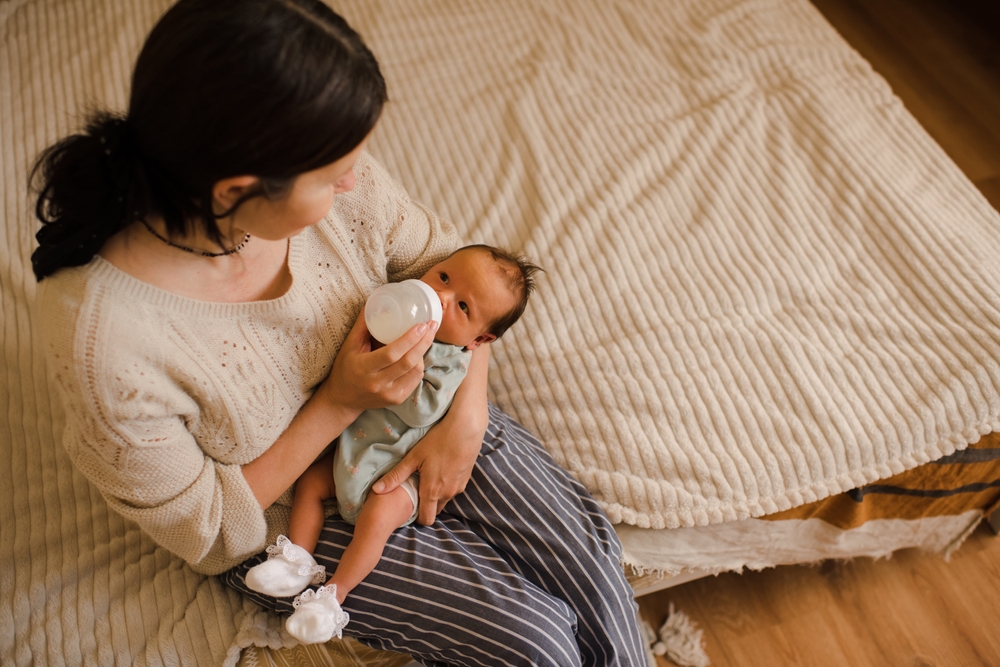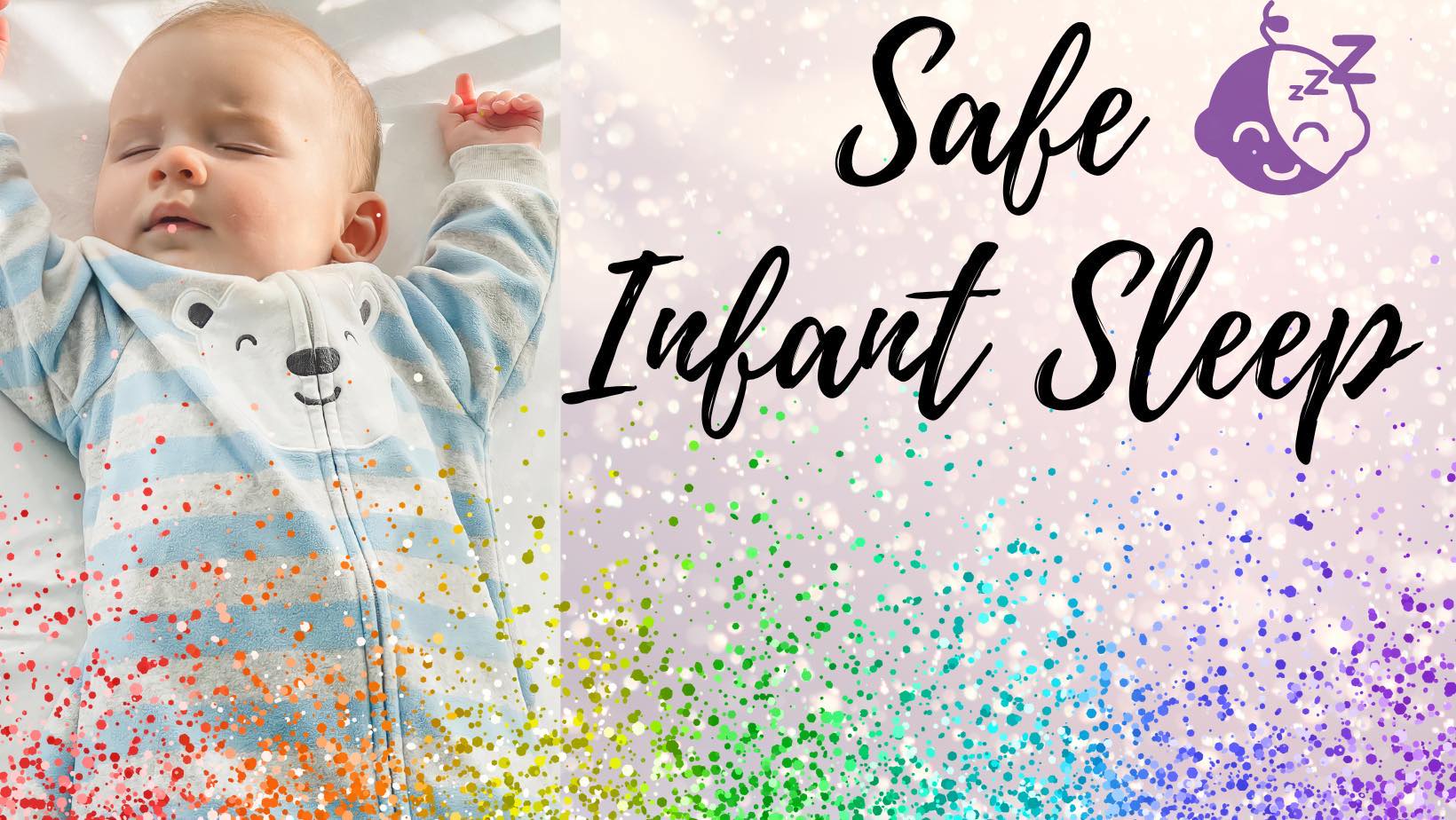Promoting Safe Sleep for Infants
We aim to educate, equip, and support providers and pediatricians in promoting safe sleep practices. By raising awareness and providing evidence-based guidelines, we strive to reduce the occurrence of sleep-related incidents and ensure the well-being of infants during sleep.
Safe Sleep Guidelines for Professionals
As a healthcare professional, your role in promoting safe sleep practices for infants is vital. By following evidence-based guidelines and recommendations, you can help reduce the risk of sleep-related incidents and ensure the well-being of the infants under your care.
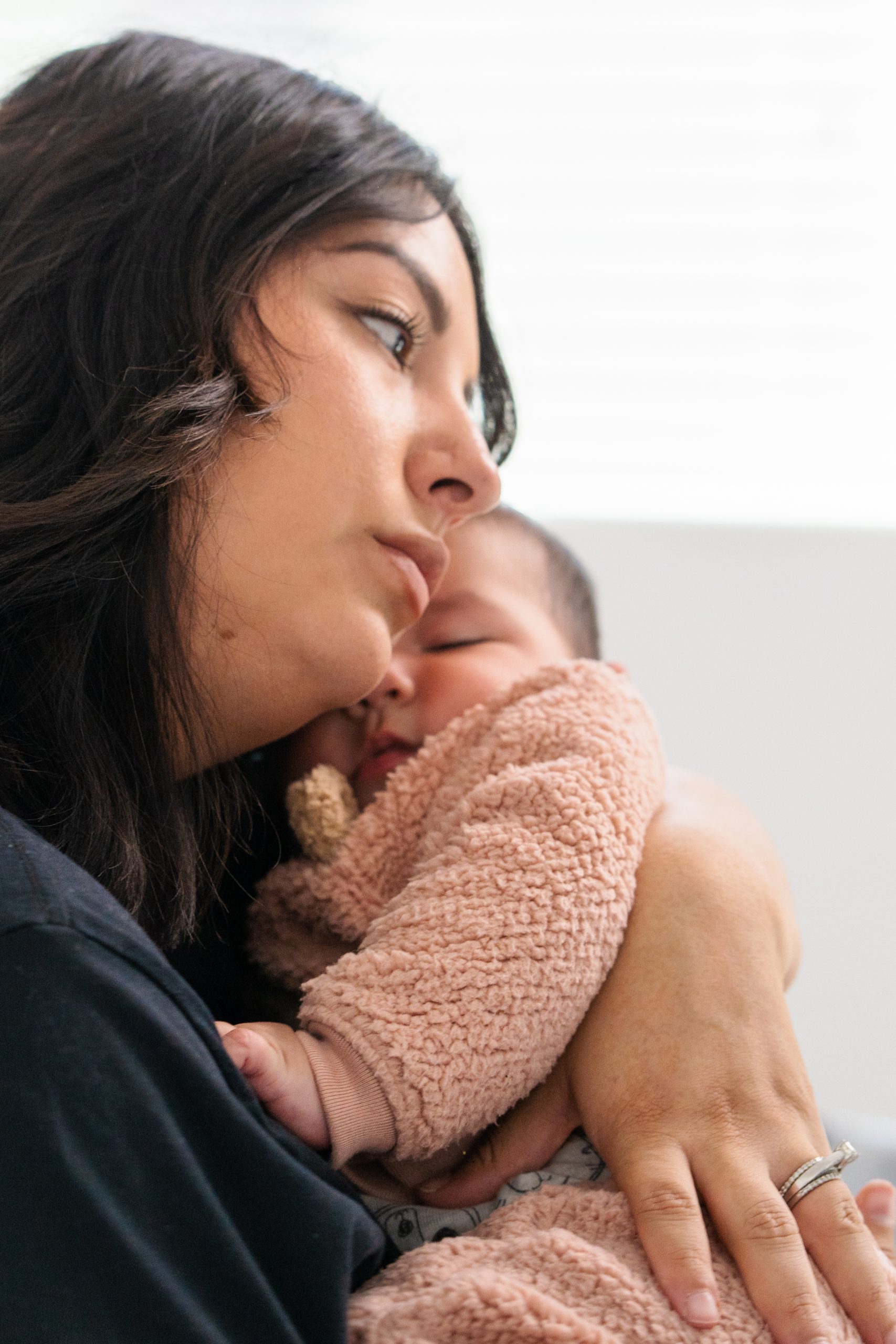
Why Safe Sleep Matters
Safe sleep practices are crucial in preventing sleep-related deaths, including Sudden Unexpected Infant Death (SUID), accidental suffocation, and other sleep-related incidents. By adhering to safe sleep guidelines, you can help families and caregivers create a secure sleep environment that reduces these risks significantly.
Key Recommendations for Safe Infant Sleep
Babies should be placed on their back for every sleep
- Babies should always be placed on their back to sleep. Placing babies on their belly or on their side to sleep is not recommended as it increases the risk of suffocation.
- Babies will not choke when they’re on their back because their anatomy and gag reflex prevents that from happening.
- If a baby can roll from their back to their belly and from their belly to their back, they should still be placed to sleep on their back. If they assume a new sleep position during sleep, they can be allowed to remain in that position.
Babies should sleep on a firm, flat sleep surface
- A crib, bassinet, portable crib, or playard that meets the safety standards of the Consumer Safety Product Commission is recommended, along with a tight-fitting, firm mattress and fitted sheet designed for that product. Nothing else should be in the crib except for the baby.
- A firm surface maintains its shape and will not indent when the infant is placed on the surface.
- The sleeping environment should be free of hazards, such as dangling cords, toys, electric wires, or other cushions and bedding to avoid the risk of strangulation or suffocation.
- Car seats, sofas, armchairs, futons, chairs, strollers, swings, infant carriers, and infant swings are not recommended for sleep. Babies should not be placed or left unattended in car seats or similar products with the straps unbuckled or partially buckled. Sofas and armchairs are extremely dangerous places for a baby, with an extraordinarily high risk for infant death, and should never be used for sleep.
Caregivers should give babies tummy time
- Tummy time is an important way to help babies grow and develop. Babies should be laid down on their stomach while they are awake and someone is watching them.
- Caregivers should start with two or three short (3- to 5-minute) tummy time sessions each day.
- The baby’s total daily amount of tummy time should be increased to at least 15-30 minutes by 7 weeks of age.
Caregivers should not sleep with their babies
The AAP does not recommend bringing babies into the caregiver’s bed under any circumstances. This includes twins and other multiples.
- If the baby is brought into their caregiver’s bed to feed or comfort them, they should be placed in their own sleep space when the caregiver is ready to go to sleep.
- Caregivers should avoid falling asleep with a baby in other spots, too. The risk of sleep-related infant death is up to 67 times higher when infants sleep with another person on a couch, soft armchair, or cushion.
It’s extra important not to share a bed with a baby if:
- Caregivers have been drinking alcohol or taken any medicines or substances. The risk of sleep-related infant death is more than 10 times higher for babies who bedshare with someone who is fatigued or has taken medications that make it harder for them to wake up, or who has used substances such as alcohol, medications, or drugs.
- The baby is very young, small, or was born prematurely. The risk of sleep-related infant death while bedsharing is 5 to 10 times higher when a baby is younger than 4 months old, and 2 to 5 times higher when a baby was born preterm or with a low birthweight.
Babies should share a room with their caregiver, ideally for at least the first 6 months
- The baby’s crib, bassinet, portable crib, or playard should be placed in the caregiver’s bedroom, close to the caregiver’s bed.
- If babies are brought into their caregiver’s bed to feed or comfort them, they should be placed in their own sleep space when the caregiver is ready to go to sleep.
Caregivers should avoid letting their babies get overheated
- Caregivers should check their baby for signs of overheating such as sweating, flushed skin, or a hot chest.
- Once a baby is home from the hospital, a hat should not be put on the baby while indoors.
If caregivers plan to swaddle their baby, they should follow guidelines to swaddle safely
- Babies should always be placed on their back when swaddled.
- The swaddle should not be too tight or make it hard for the baby to breathe or move their hips.
- When the baby looks like they are trying to roll over, caregivers should swaddling due to risk of suffocation. Some swaddles that leave the baby’s arms free may still be appropriate for use; caregivers should check the product instructions or consult with their healthcare provider to assess what is best for their baby.
Soft and loose objects should be kept out of the baby’s sleep area
- All pillows, pillow-like toys, quilts, comforters, and loose bedding should be removed from the baby’s sleep area to avoid risk of suffocation, strangulation, and wedging/entrapment.
- Blankets, hats, and other coverings used to keep a baby warm are not recommended because they increase the risk of entraapment and strangulation in the sleep space.
- To keep a baby warm, caregivers can consider dressing them with layers of clothing, using a wearable blanket, swaddle, or similar infant sleep clothing.
Feeding of human milk is recommended
- Unless it is not safe to do so, or the parent is unable to do so, it is recommended that infants be fed with human milk.
Talking to Your Families and Caregivers About Safe Sleep Guidelines and Practices
As a healthcare or community service provider, you play a vital role in educating and guiding parents and caregivers on safe sleep guidelines and practices for infants. Open and effective communication is key to ensuring that families understand the importance of providing a safe sleep environment for their little ones.
Your role as a healthcare or community service provider means that you are also a trusted source of information and guidance for families and caregivers. By effectively communicating safe sleep guidelines and practices, you can help create a safer sleep environment for infants and contribute to their overall well-being.
If you have questions or need additional resources, please refer to the resources below to promote safe sleep practices and ensure the health and safety of the infants under your care.
Here are some recommendations on how to approach these conversations with families and caregivers:
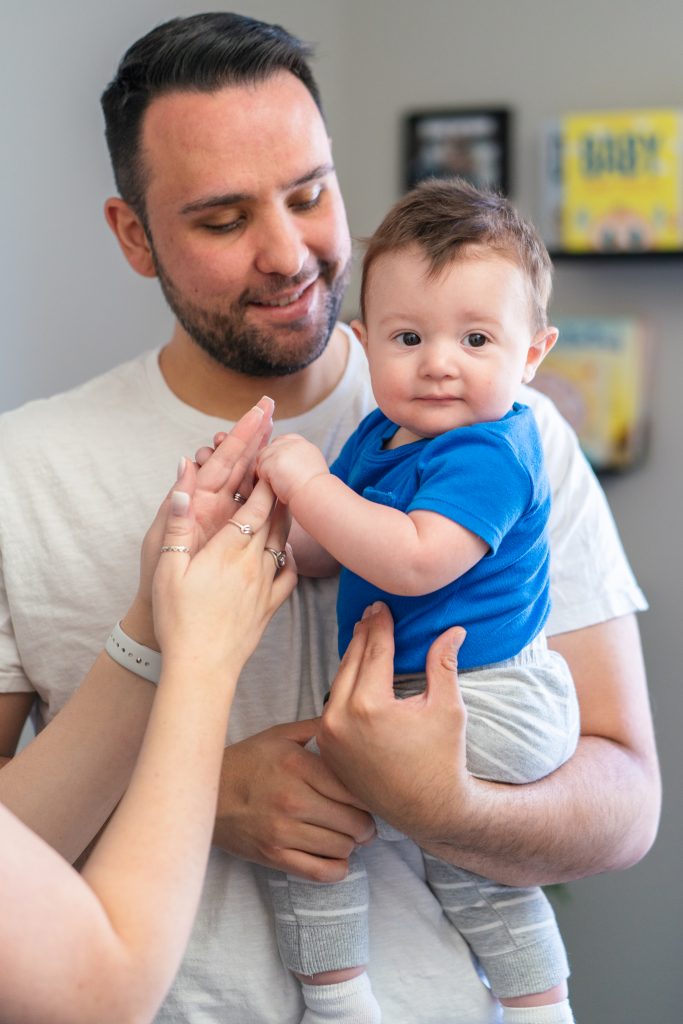
1 - Start Early:
Introduce the topic of safe sleep practices during prenatal visits or before the birth of the child. Emphasize the significance of safe sleep and its role in reducing the risk of sleep-related incidents and SUIDs.
2 - Use Clear and Simple Language:
When discussing safe sleep guidelines, use language that is easily understandable by parents and caregivers. Avoid medical jargon and provide explanations in a clear and concise manner. Use visual aids from the resources below to help illustrate the recommendations effectively.
3 - Emphasize the Benefits:
Highlight the benefits of following safe sleep guidelines, such as reduced risk of SUIDs and other sleep-related incidents. Emphasize that safe sleep practices provide a secure sleep environment that promotes healthy growth and development for infants.
4 - Address Concerns and Myths:
Acknowledge any concerns or misconceptions that parents or caregivers may have regarding safe sleep practices. Take the time to address their questions and provide evidence-based information to dispel common myths or misconceptions. Be patient and empathetic, understanding that parents may have received conflicting advice or cultural beliefs that influence their views on safe sleep.
5 - Provide Practical Tips:
Offer practical tips and recommendations that parents and caregivers can easily implement in their daily routines. Discuss key safe sleep practices, such as placing infants on their back to sleep, using a firm sleep surface, and avoiding loose bedding. Demonstrate proper positioning and swaddling techniques when applicable.
6 - Tailor Recommendations:
Recognize that each family’s situation is unique, and their circumstances may require personalized recommendations. Take into account factors such as room-sharing arrangements, cultural practices, and infant health conditions when discussing safe sleep guidelines. Provide adaptable solutions that suit their specific needs while still prioritizing safety.
7 - Share Resources:
Direct parents and caregivers to reputable resources and educational materials that reinforce safe sleep practices. Provide them with brochures, websites, and videos that they can reference for further information. Encourage them to share these resources with other family members or caregivers involved in the infant’s care.
8 - Follow Up and Reinforce:
During subsequent visits, follow up with families to ensure they are adhering to safe sleep practices. Reinforce the importance of consistency and address any challenges or concerns they may be facing. Offer ongoing support and guidance as needed.
Continuing Education Resources for Healthcare Providers
As a healthcare provider, staying informed about the latest research, guidelines, and best practices is essential for providing the highest level of care to your families and caregivers. We understand the importance of continuing education, particularly in the area of safe infant sleep. That’s why we have curated a collection of valuable resources to support your professional development and enhance your knowledge in this critical field.
American Academy of Pediatrics
Sleep-Related Infant Deaths: Updated 2022 Recommendations for Reducing Infant Deaths in the Sleep Environment
Safe Sleep Campaign Toolkit from the American Academy of Pediatrics
To help guide conversations with families about safe sleep, the American Academy of Pediatrics has developed a suite of materials, including posters, infographics, videos, and social media messages.
Curbside Consults Podcast - Sleep-Related Infant Deaths with Dr. Rachel Moon
Podcast with Rachel Moon, Harrison Distinguished Teaching Professor of Pediatrics of at the University of Virginia and Chair of the AAP’s Task Force on Sudden Infant Death Syndrome. She is one of the authors of the AAP’s 2022 updated recommendations on sleep-related infant deaths.
HealthyChildren.org - How to Keep Your Sleeping Baby Safe: AAP Policy Explained
Every year, around 3,500 babies in the United States die suddenly and unexpectedly while they’re sleeping. Most of these tragic deaths are due to Sudden Unexpected Infant Death (SUID) or accidental deaths from suffocation or strangulation.
HealthyChildren.org - Sleep
Babies do not have regular sleep cycles until about 6 months of age. While newborns sleep about 16 to 17 hours per day, they may only sleep 1 or 2 hours at a time. As babies get older, they need less sleep. However, different babies have different sleep needs. It is normal for a 6-month-old to wake up during the night but go back to sleep after a few minutes.
Safe to Sleep - Public Education Campaign Led By NIH
Helping to reduce the risk of Sudden Unexpected Infant Death (SUID) and other sleep-related causes of infant death.
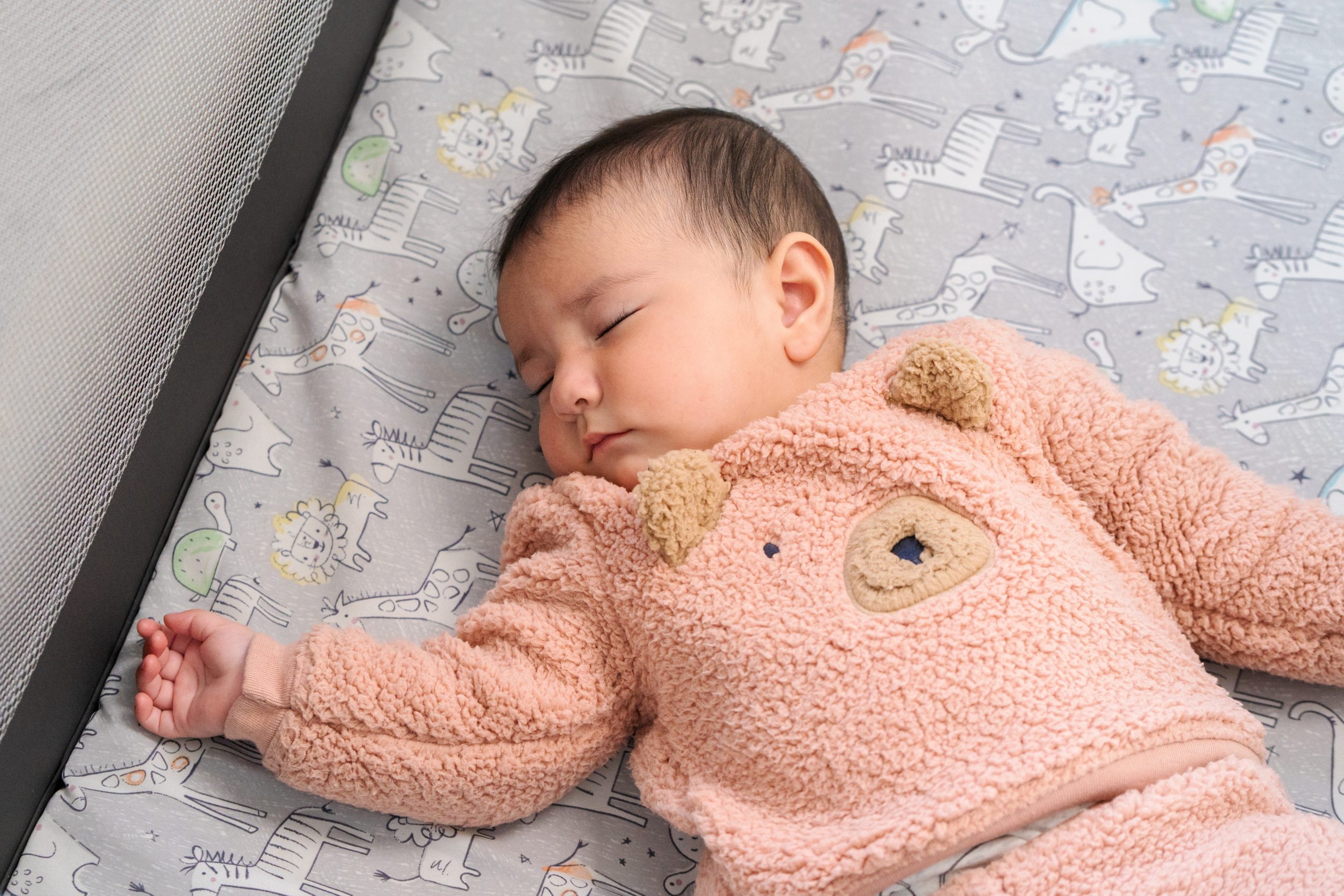
Additional resources to keep baby safe during sleep time.
- How to Keep Your Sleeping Baby Safe: AAP Policy Explained – HealthyChildren.org
- Keeping Your Sleeping Baby Safe: AAP Policy Explained
- Facts About SIDS and Safe Infant Sleep
- ECECD Safe Sleep Baby Kit
- Safe Sleep Partner Toolkits – Social Media_Spanish
- Safe Sleep Partner Toolkits – Social Media_English
- Safe Sleep Partner Toolkits – Print_Spanish
- Safe Sleep Partner Toolkits – Print_English
- Safe Sleep Complete Partner Toolkit

